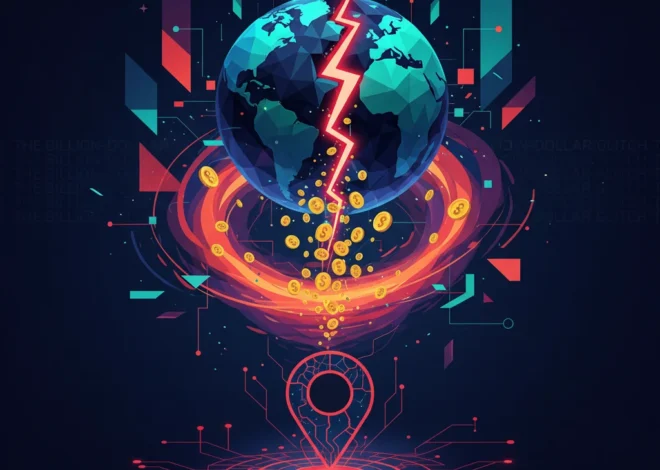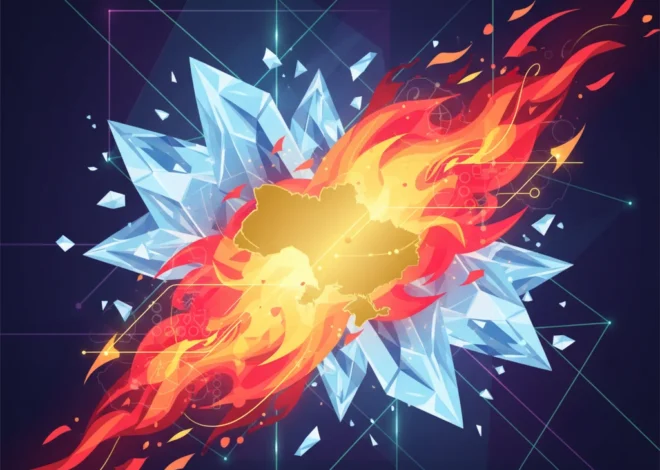
A Glimmer of Peace? Decoding the Market Impact of US-Ukraine Diplomatic Progress
In the quiet, diplomatic corridors of Geneva, a potential shift in the global geopolitical landscape is taking shape. Recent reports indicate that US and Ukrainian officials have made “progress” in talks aimed at forging a peace plan with Russia. While specifics remain under wraps, the very existence of these discussions, as highlighted by the Financial Times, is enough to send ripples through the world’s financial centers. For investors, business leaders, and anyone attuned to the pulse of the global economy, the question is no longer just about the conflict itself, but about the profound economic and financial consequences of a potential peace.
This development, however tentative, forces us to look beyond the daily headlines and consider the structural changes the conflict has wrought upon global markets. From energy prices and supply chains to defense spending and the very architecture of international banking, the war has been a defining economic event of this decade. Now, as diplomats talk, we must analyze what a path toward resolution could mean for your portfolio, your business, and the future of global finance.
The Economic Shadow of Conflict: A Sobering Retrospective
To understand the potential impact of peace, we must first quantify the cost of war. The conflict has acted as a massive inflationary engine, disrupting critical supply chains and sending shockwaves through commodity markets. The most visible impact was on energy. Europe’s scramble to wean itself off Russian gas triggered a global energy crisis, reshaping trade flows and accelerating the push toward renewables. Simultaneously, the blockade of Black Sea ports jeopardized global food security, as Ukraine is a critical supplier of wheat, corn, and sunflower oil.
The World Bank has estimated the cost of reconstruction and recovery in Ukraine to be staggering, with one report placing the figure at over $486 billion over the next decade. This figure represents not just destroyed infrastructure but also a decimated national economy. On a global scale, the conflict has fueled uncertainty, dampened investor sentiment, and forced a costly reorganization of supply chains as companies seek to mitigate geopolitical risk. The intricate web of sanctions imposed on Russia has also rewired the global financial technology landscape, challenging the dominance of traditional payment systems and creating complex compliance hurdles for international corporations.
Reading the Market’s Tea Leaves: From Risk Premium to Peace Dividend
For months, the stock market has priced in a “geopolitical risk premium,” particularly in European equities and sectors directly affected by the conflict. The mere whisper of “progress” in peace talks, as reported in Geneva (source), is enough to make traders and algorithms reconsider their positions. A credible peace process could unlock a significant “peace dividend,” but the effects would be far from uniform across different asset classes and industries.
Below is a simplified analysis of potential market reactions under two divergent scenarios: a continuation of the current conflict versus a tangible move toward a lasting peace settlement.
| Market Sector / Asset Class | Scenario 1: Continued Conflict | Scenario 2: Tangible Path to Peace |
|---|---|---|
| Energy (Oil & Gas) | Prices remain elevated and volatile due to supply uncertainty. | Potential for significant price drops as Russian supply gradually re-enters markets; focus shifts to long-term stability. |
| Defense & Aerospace | Stocks remain buoyant on the back of increased national defense budgets and sustained munitions orders. | Potential for a sharp correction as immediate demand for weaponry wanes; focus may shift to R&D and cybersecurity. |
| European Equities (e.g., DAX) | Performance is suppressed by high energy costs, inflation, and consumer uncertainty. | Strong rally potential driven by lower energy costs, improved consumer confidence, and proximity to reconstruction efforts. |
| Agricultural Commodities (Wheat, Corn) | Prices remain sensitive to Black Sea supply disruptions, impacting global food security. | Stabilization and potential decline in prices as Ukrainian exports fully resume, easing global inflationary pressures. |
| Financials & Banking | Focus remains on sanctions compliance and managing exposure to the region. | New opportunities arise in financing massive reconstruction projects, but risks related to unwinding sanctions remain. |
The New Economic Map: Sector Implications of a Post-Conflict World
A resolution to the conflict would not simply return the world to its pre-war state. It would accelerate trends and create entirely new paradigms for investing and international business.
Energy and Green Transition
The energy shock forced Europe to accelerate its green transition at a pace previously thought impossible. A peace agreement would likely lower fossil fuel prices in the short term, but the strategic commitment to energy independence through renewables is now irreversible. This creates a long-term tailwind for companies in solar, wind, hydrogen, and energy storage solutions. The focus of energy trading will increasingly shift from crude oil barrels to megawatt-hours and carbon credits.
Defense Reimagined
While a ceasefire would cool the red-hot defense sector, the conflict has permanently raised the baseline for NATO and EU defense spending. The focus may shift from producing conventional artillery and tanks to investing in next-generation technologies like AI-driven surveillance, drone warfare, cybersecurity, and space-based assets. The long-term investing thesis in defense will pivot from volume to technological superiority.
Green Tape or Green Gold? Deconstructing the Economic Clash Between UK Housing and Nature
Rebuilding a Nation: The Ultimate Infrastructure Play
The reconstruction of Ukraine will be one of the largest economic undertakings of the 21st century, dwarfing post-WWII reconstruction efforts in relative terms. According to a joint assessment by the Government of Ukraine, the World Bank Group, the European Commission, and the United Nations, the needs are immense and growing (source). This presents a multi-decade opportunity for companies in construction, materials, engineering, telecommunications, and project finance. International development banks and private capital will need to work in concert, creating novel financial instruments to fund these projects. The field of economics will be keenly focused on studying the efficacy and impact of this massive capital injection.
Navigating the Path Forward
The reports of diplomatic progress between the US and Ukraine on a peace framework are a welcome development in a long and devastating conflict. However, for business leaders and investors, this is a moment for careful analysis, not premature celebration. The immediate market volatility surrounding such news is often a poor guide to long-term value creation.
The key is to understand the deep, structural shifts the conflict has already triggered—in energy policy, supply chain resilience, defense posture, and global financial flows. A potential peace will not reverse these trends but will instead channel them in new directions. The end of hostilities would mark the beginning of a new economic chapter, defined by the colossal task of reconstruction and a reconfigured global risk landscape. The savviest players in the market will be those who look past the headlines and position themselves for the complex, challenging, and ultimately transformative economic reality that lies ahead.
The Billion-Pound Problem on Your Plate: Why a Waiter Shortage Should Worry Investors
As officials continue their delicate negotiations, the world watches. But for those managing capital and strategy, the work has already begun: modeling the risks, identifying the opportunities, and preparing for a global economy that will be forever changed by this conflict, whether it ends tomorrow or in years to come.


